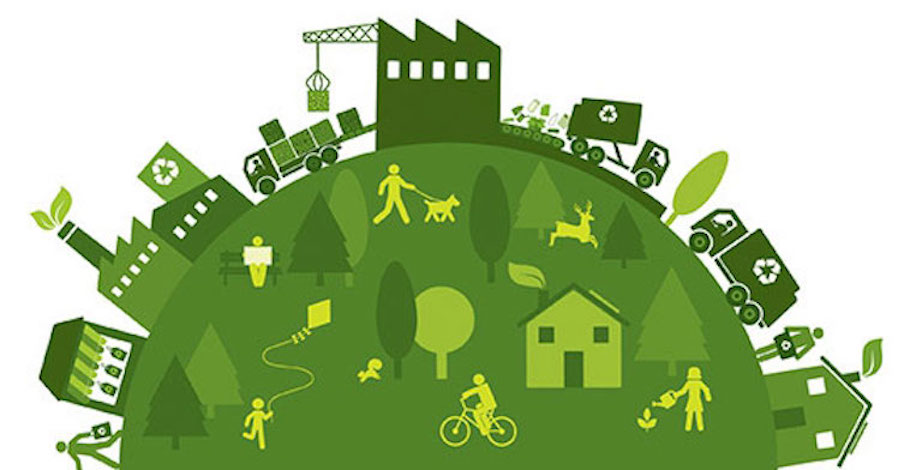“Sustainability makes good business sense, and we’re all on the same team at the end of the day. That’s the truth about the human condition.”-Paul Polman
Recently in the news, and especially amongst the social buzz of the crypto craze, we’ve heard some concerns about the environmental impact of crypto transfers. More specifically: the mining process of the world’s favorite crypto: Bitcoin (BTC). These mining processes are being ridiculed for their energy consumption in the computing power needed to both mine for coins as well as process transactions.
How do these mining operations match up in sustainability vs. other transfer systems? Against traditional fiat currency? Against other blockchains with a PoS (proof of stake) system? They all run on computers, or, in the case of fiat, involve more resources than a computer, and require said computers to be running pretty much at all times. All our options seem to consume energy, but how do they compare? The Focus today is our (sarcastic) favorite: Fiat currency.

BTC and Crypto VS Fiat:
With the great concern for environmental safety, it is vital that we take a look at the impact of our current financial system on sustainability. With both digital and physical money in the mix, amongst ~180 different currencies worldwide, Not to mention the thousands of banks across the world; Fiat currency clearly consumes tons of resources (literally).
The inflationary habits of fiat currency cause more money to be minted each day, as notes are exchanged at a higher rate than can be backed by their tangible certificate; This is more true in the day of credit card and digital banking and purchasing, where dollars are spent easier and more fluidly, although digital banking was seen as a “remedy” to the printing madness. The United States alone prints roughly $560 Million Dollars/Day, (~24.8 Million Notes) adding up to an estimated 6.6 Billion Dollars in a single year (as of 2014). The creation of these notes involves the processing of raw materials, water usage, a hefty amount of waste, chemical mixtures for ink, electricity costs of printing and processing, and an overall sub-par system in regards to environmental care.
The need to replace the notes after a period of time is also another factor to take into account, as the circulation cycle only lasts at most a couple decades (only a few years with smaller bills). Some central banks are taking action. Switching to more durable and long-lasting materials to cut this need to replace and bring an extra couple decades to circulation of bills.
Coins come with problems of their own, being made of metals which are environmentally costly to harvest and process. The ever changing values of the metal offers no solution either, causing changes in production to be made constantly in the base metals of certain coins. In some cases, it costs or has cost more to mint a coin than the value of the coin itself, that or the “profit” margin is little to nothing. Coins are nice, when they’re made of and truly backed by a valuable substance.
When it comes to banks and processing centers, the amount of computing power, manpower and cost of maintaining the assets which uphold the system FAR outnumber those needed to transact or mine with BTC. They especially exceed the power needed for staking protocols which require much less of the power needed in Bitcoin operations.
There are a few things to take into account with banks. The amount of banks in the world, each with the highest quality of security and their own digital network, usually having a variety of third parties involved for certain services. Everywhere we go, there’s a large number of ATMs, millions across the globe, most running 24/7. They’re in almost every supermarket or gas station, which also have their own payment processing systems which probably run through third party extensions for different data transfers. Does it ever come to mind the amount of offices holding massive databases and computers? Each building holds anywhere from a few to hundreds of employees, each having their own computer and commute to and from work. We also look past the environmental impact of having built these giant office buildings in the first place. There’s a great deal to take into account when evaluating sustainability.
The environmental impact of our fiat system is often overlooked by the social buzz and is one of far reaching extent. All activities of exchange, especially in the age of information and interconnectivity, will always require some cost to the environment in trading of value. It’s important that we take these things into account, and look for solutions. Digitisation of banking has offered and shown a strong step in the right direction with people being able to work from home, money being more fluid in electronic form rather than printed, and the saving of energy on trips to the bank or on paperwork. However, the only way to truly remedy all of the environmental side-effects of money making and transfer is to go completely digital, or simply resort back to a barter (item for item) system. Dollars and coins will always need to be printed, so long as they exist. What the crypto world has done is it has eliminated the need for printed (essentially valueless) money. Blockchain developers and enthusiasts have seen and have built upon the tangible and practical value of Crypto in this ever deepening technological era in which we live.
Although Bitcoin does take up a good amount of electricity in computing power, it may be safe to say, all things considered, that it’s still more environmentally safe and sustainable than the fiat currency we have today. With Cryptocurrency and renewable energy tech evolving even more rapidly than before imagined, I’d put a bet on the comparable difference in sustainability becoming much more discernible. With staking, or PoS, protocols, which use a fraction of the power of BTC, taking up most of the crypto sphere, and Crypto icon Ethereum switching to said type of system, it’s definitely looking like crypto isn’t all that bad in the future of sustainability.
Look out for more on Crypto, if it has a future, and more on sustainability. Thank you all for reading and please subscribe! Comment, contact and share and always stay tuned.




